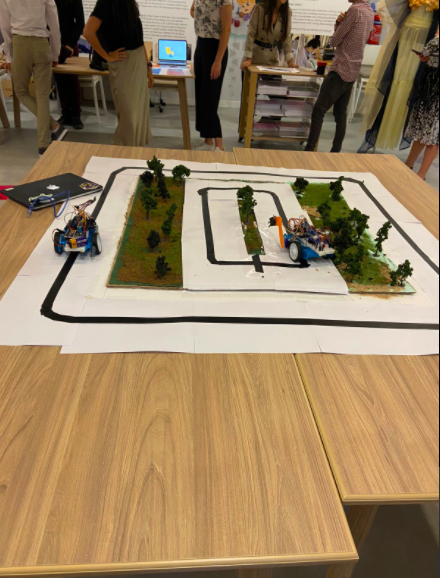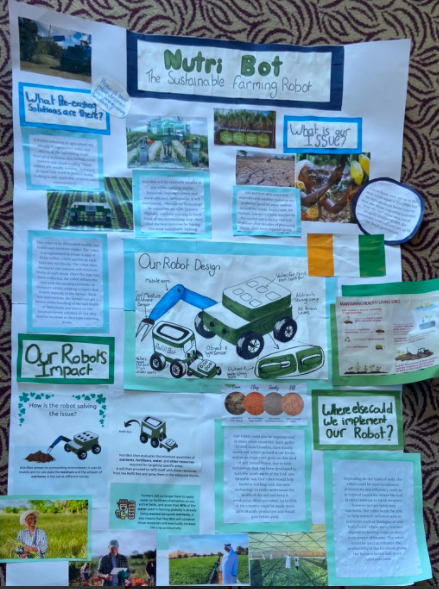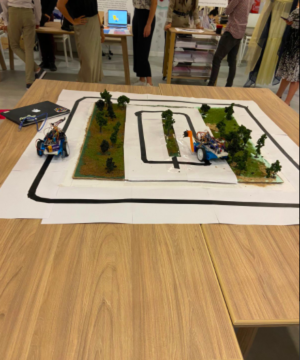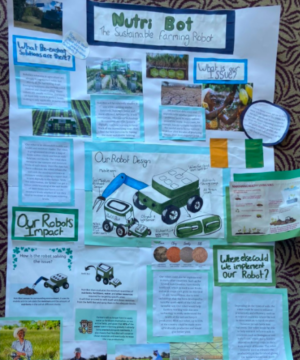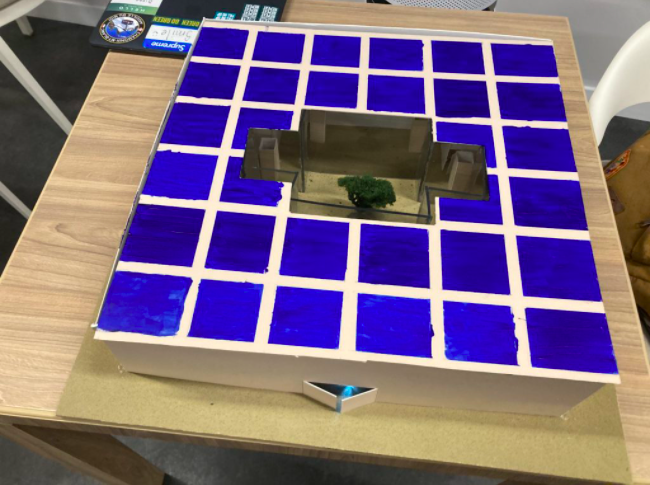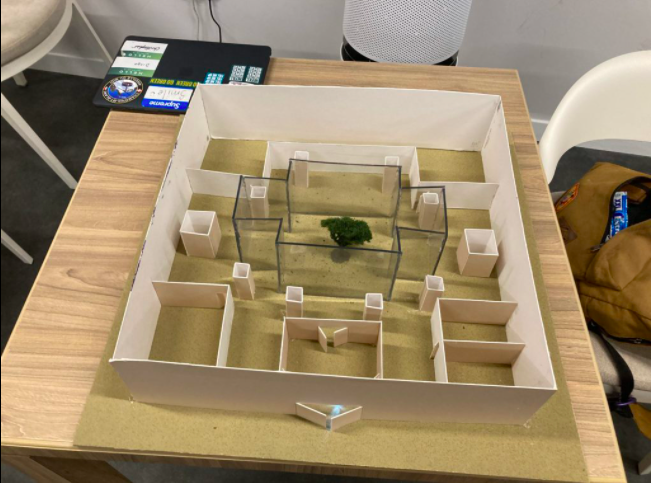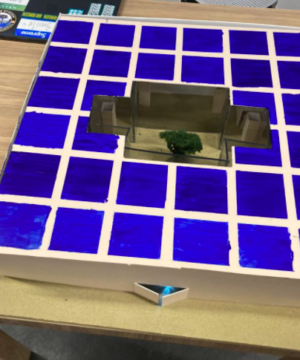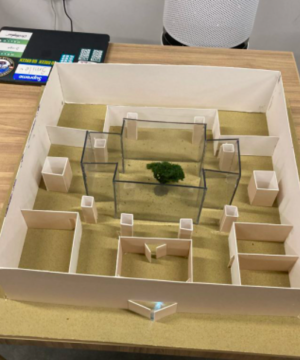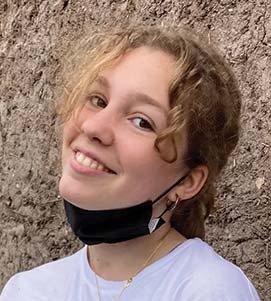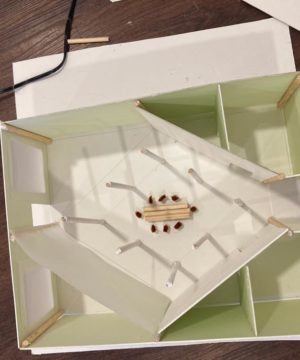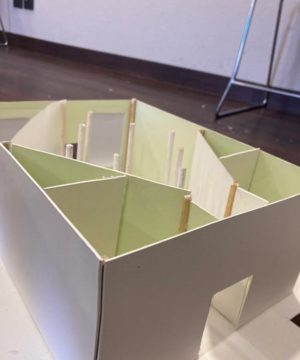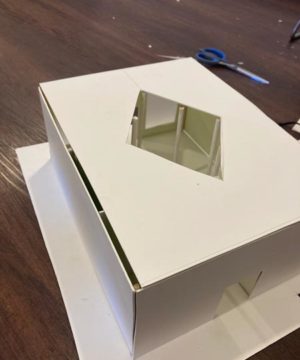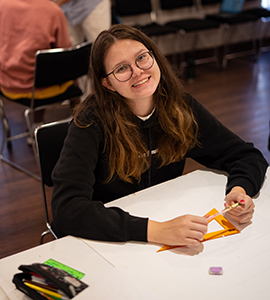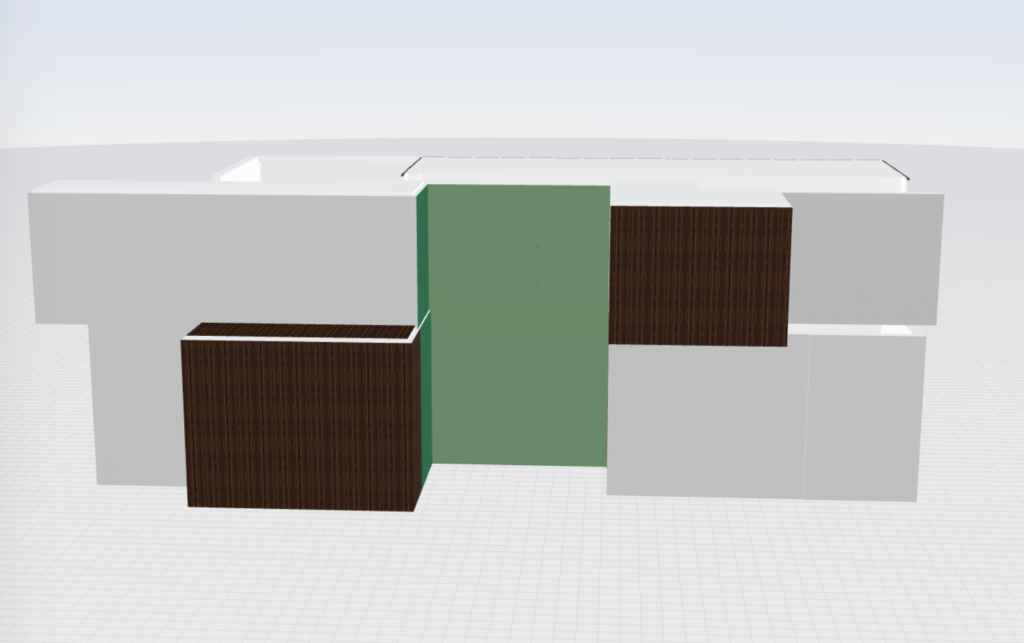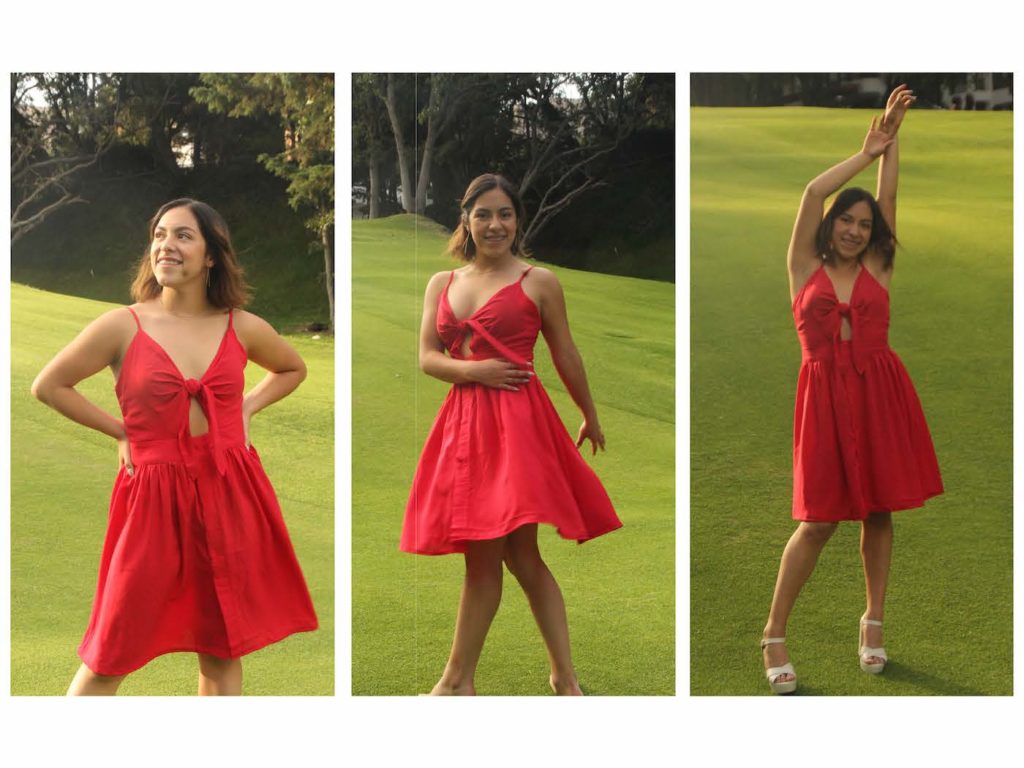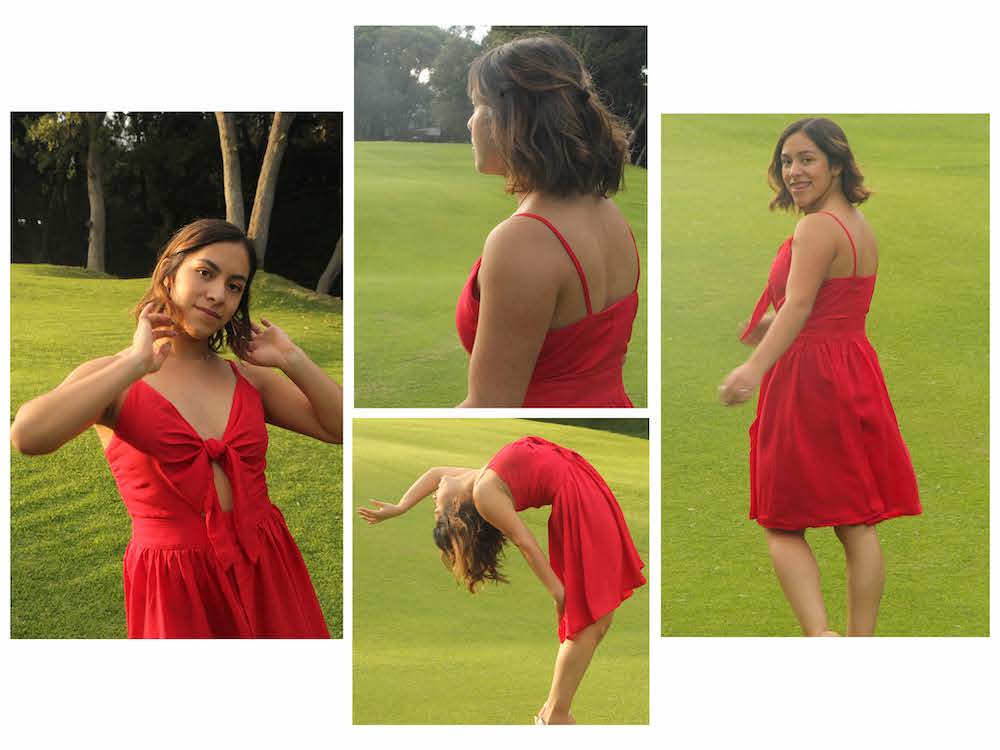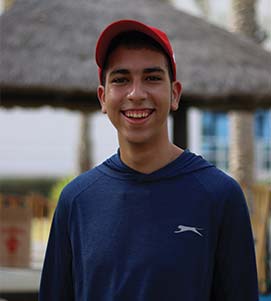
Getting into the field of robotics with little hardware knowledge was both challenging and exciting. I learned that I can find ways to implement existing knowledge into a new field and that there’s always room to lead my own learning experience if I work hard enough. My biggest takeaway is always approaching any new project with a positive, open, and flexible mindset.
-Class of 2023 Student Bido H.
Driving Question: How can I design and build a robot – inspired by Expo 2020 and the Mobility Pavilion – that performs an action to increase our quality of life?
Our project is an autonomous conservational technology system that aims to provide efficiency in agriculture. NutriBot goes around agricultural fields and senses its surrounding environment to measure moisture levels and the type of nutrients in the soil. It then uses this data to evaluate the minimum quantities of water and nutrients necessary to keep the soil healthy and sprays them in the targeted blocks. Implementing this system will make farmers no longer have to apply water or fertilizers across entire fields. NutriBot can conserve up to 40% of water already wasted in agriculture alongside nutrients due to human error and inefficiency.
